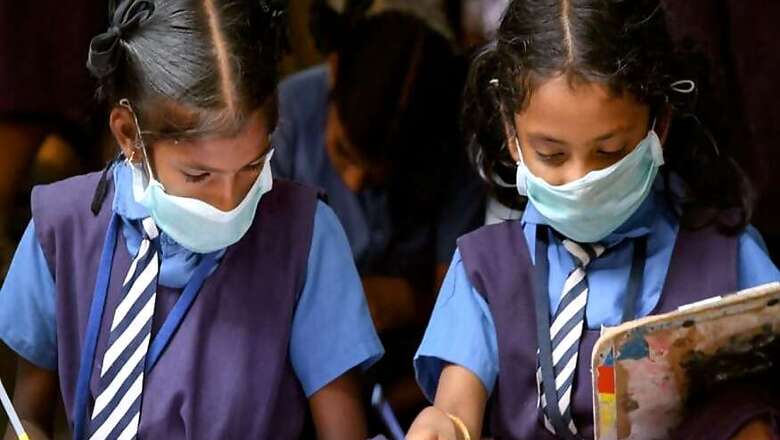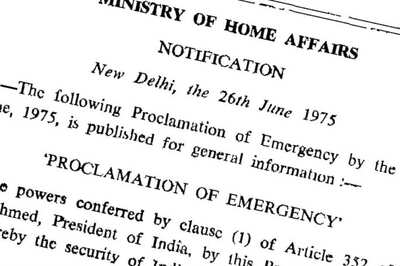
views
We need to draw a baseline now and work out a detailed action plan. The COVID-19 is an excellent opportunity to transform the system, just as highlighted by the prime minister in his speech. The key lies in making a difference through implementation. It is a once in a lifetime opportunity, and we must not lose it. India can undoubtedly grow at 16 percent for the next three decades. We have all the constituents for becoming a great nation, and we should now reorient our approach to achieve this goal, which is both aspirational and essential.
It’s COVID-19 everywhere and not a single person in this world has remained untouched of its impact. As we pass through this calamity, we don’t know how long it will last and how deep it would affect us. Indeed, every individual and every corporate, has been affected. So, for sure, India will also face its devastating impact. Also, super-cyclone Amphan has battered the eastern part of the country. If we look at the overall scenario, we had touched a low growth rate of 4.5 per cent in 2019, and now coronavirus has battered the economy beyond imagination.
Despite all these odds, India has a unique challenge. As a young nation, India is aspirational and despite this battered economy, the youth of India carry dreams of not just coming out of the crisis, but also leading a life with decent jobs and a good source of income. For planners and policymakers, it is a tough situation in India’s history. The only other time we probably faced such a situation was in 1947.
If we look at the demand and the need for growth, the figures are mind-boggling. Though we have the youth and aspirational population, we need to provide them first with a source of income. We cannot channelise them without growing the economy exponentially. But exact growth do we need, and for how long, given that our demographic dividend would last for just another 25 years?
Setting Goals and Direction
India, as of now, is in the middle rung of the Lower-Middle Income Country (LMIC) (as per the classification of the World Bank), with a per capita GDP of USD 2,198 (2019). Lower-Middle Income economies are those that have a per capita GDP between USD 1026-3995. If we take into account that the categories are redefined based on the annual global per capita GDP growth projected to be 3 per cent (before COVID-19), then India would achieve the following after 25 years, based on its yearly GDP growth per Capita.
Yearly Growth, GDP per capita (%) for the next 25 years
3.03 per cent India will downgrade to a Lower Income country
6.32 per cent India will remain a Lower-Middle-Income country
6.73 per cent India will become a Middle-Income country
9.77 per cent India will match the ‘World Average’ per capita income of $11,313
14.79 per cent India will achieve the average per capita income of European Union of $ 35,616
15.35 per cent India will achieve the average per capita income of OECD countries of $ 40,410
15.81 per cent India will break the league of a Middle-Income country and become a high-income country with a per capita GDP of US$44,787
Source: The Book ‘Tough Choices & Hard Decisions- Rebuilding India. The Next 25 Years’.
The data above gives us a clear picture of where we are headed with the current growth rate, and I was glad when Prime Minister Narendra Modi talked about moving from incremental growth to exponential growth, and so India has a choice of deciding its goal for the next 25 years — whether we want to be a Middle-Income country, a High-income country or remain a Lower-Middle Income country. If we wish to be a Middle-income country, we should be happy to grow our GDP per capita by 6.73 per cent for the next 25 years. If we wish to become a high income or a developed country, we need to grow the GDP per capita at 15.81 per cent for the next 25 years.
While becoming a developed country is every Indian’s dream, our 15.81 per cent required growth may be aspirational from that perspective. But we have another compelling reason (beyond being aspirational) for growth at about 16 per cent.
India needs to create 10 lakh jobs a month for new entrants joining the workforce. So, we need to create 1.2 crore jobs per year. Also, here I am not considering the people who are unemployed. What is the growth we need in GDP? Every percent growth in GDP creates 7.5 lakh jobs, so, for creating 1.2 crore jobs every year, we need to grow 16 per cent every year, or else, we will have a severe job deficit. Growing exponentially is just not about our national aspirations, but also the key to survival.
For growing at 16 per cent, India needs a systemic change, and it cannot be business as usual. We need to address the ‘Urgent’ (short-term and cyclical issues ) and the ‘Important’ (long-term and systemic issues).
We need to draw a baseline now and work out a detailed action plan. The COVID-19 is an excellent opportunity to transform the system, just as highlighted by the prime minister in his speech. The key lies in making a difference through implementation. It is a once in a lifetime opportunity, and we must not lose it. India can undoubtedly grow at 16 percent for the next three decades. We have all the constituents for becoming a great nation, and we should now reorient our approach to achieve this goal, which is both aspirational and essential.




















Comments
0 comment